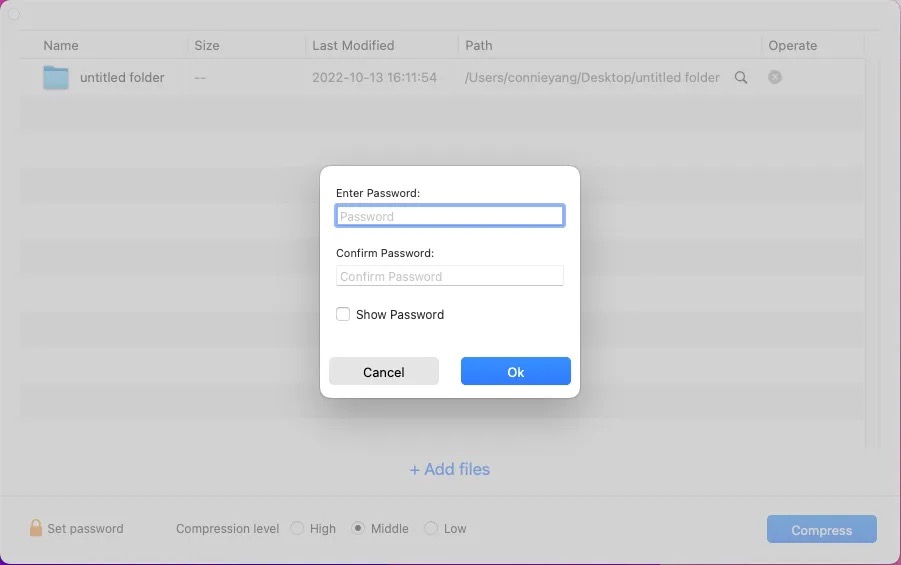I need to send a set of important project files to a partner. To ensure the security of the files, I’ve decided to encrypt and compress them with a password, so only my partner can access them. How can I do that?
Have you heard of iBoysoft MagicMenu, a professional right-click extension tool? It offers a very convenient compression feature, allowing you to encrypt and compress files simply by right-clicking on them without the need to use the command line.
-
Find Utility in the main interface, and click the download button near the Compress to your right-click.
-
Right click the target file and click Compress.
-
Enter the password in the pop-up window to encrypt the file.
-
Click Compress to finish the process.
It’s so easy to compress a file with a password!
macOS’s built-in compression feature does not directly support encrypting files (via the graphical interface), but if you want to encrypt and compress files, you need to use Terminal. Here are the steps:
- Open Terminal.
- Use the zip command with the -e option to encrypt and compress the file. filename.zip is the name you want to give to the compressed archive, and /path/to/your/file is the file path you want to compress:
zip -e filename.zip /path/to/your/file - The system will prompt you to enter and confirm a password, after which the file will be compressed and encrypted.
